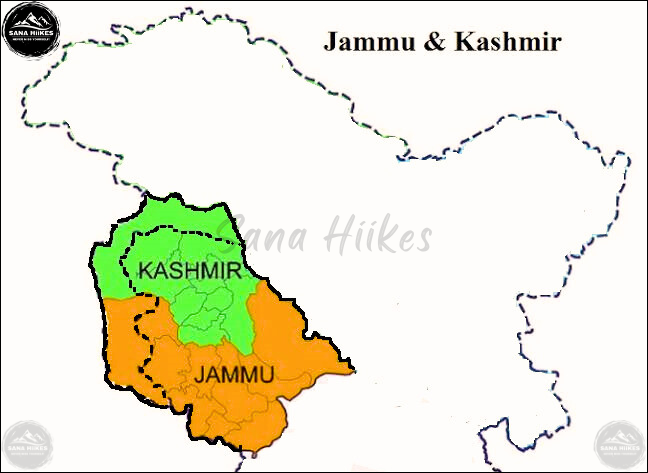
Introduction to Jammu and Kashmir
Jammu and Kashmir, nestled in the northernmost part of India. The breathtaking destination is known for its stunning landscape, rich heritage and adventure-filled experience. This region is often referred to as the “Paradise on Earth,” home to snowcapped mountains, serene lakes, lush green valleys and historic temples. If you are seeking an adventure, spirituality or a simply peaceful gateway, Jammu and Kashmir offers the best and perfect blend of nature and culture.
Jammu, which is also known as the “City of Temples,” is the gateway to Kashmir. Here lies the famous temple Vaishno Devi Shrine, which is well known for its religious significance. This temple is also recognized as one of the Shaktipeeths, which is believed to be the holiest of all Shaktipeeths.
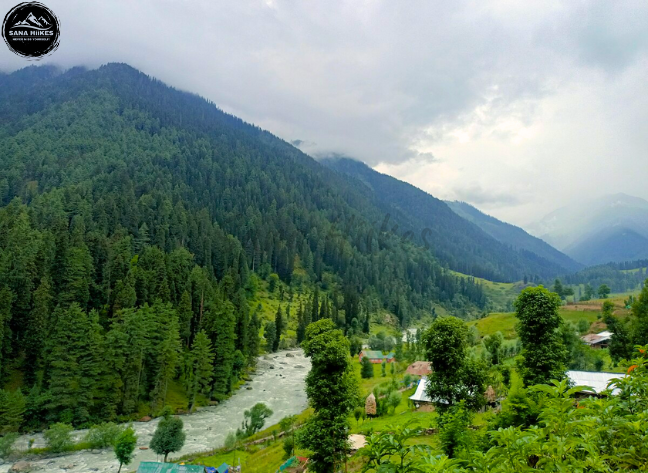
Kashmir, on the other hand, is renowned for its mesmerizing beauty, from the iconic Dal Lake to the Mughal Gardens. From Srinagar with the city life to the pristine meadows of Gulmarg and Sonamarg. This region welcomes you for adventure with thrilling activities like trekking, skiing, river rafting and paragliding.
Jammu and Kashmir is just not about the place that shares scenic beauty but it is a land of warm hospitality. Either you are gliding on a Shikara in Dal Lake or flavoring your mouth with Kashmiri cuisine. Exploring the historic forts of Jammu or skiing in Gulmarg, every moment spent here is unforgettable. Planning your trip to this paradise in North India and immerse yourself in its charm, culture, and adventure.
Quick Facts Check

1. How to Reach
Reaching Jammu & Kashmir is convenient with multiple transport options, including air, rail, and road. Here’s how you can get there:
By Air – Srinagar International Airport (SXR) is the primary airport in Kashmir, offering excellent connectivity to major cities like Delhi, Mumbai, and Bangalore. It serves as the best entry point for travelers exploring the Kashmir Valley. Another key airport is Jammu Airport (IXJ), also known as Satwari Airport, which is more suitable for visitors to the Jammu region and Vaishno Devi pilgrims. Airlines such as Air India, IndiGo, Go First, and SpiceJet operate regular flights to both airports. Srinagar Airport is approximately 12 km from the city center, and visitors can find taxis and local buses for transport to their destinations.
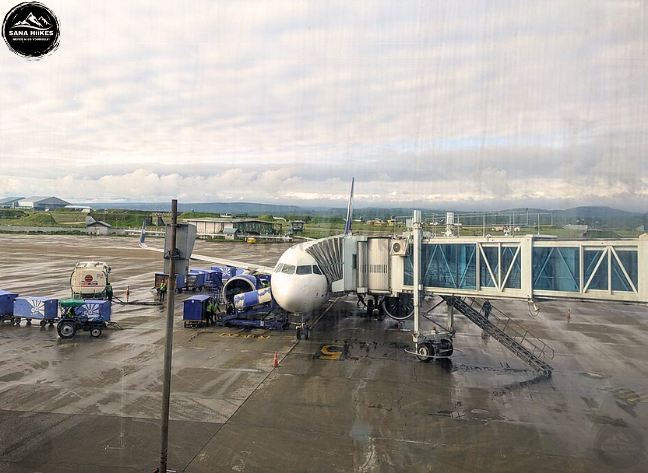
Travel Hack: If you want to save on your taxi fare from Srinagar Airport to the city center, exit the airport completely and take an e-rickshaw for ₹50-₹100 (fares may vary by season). The e-rickshaw will drop you at Lal Chowk, from where you can take a shared cab or local transport to Dal Lake or your destination.
By Train – The most convenient railway station for reaching Jammu & Kashmir is Jammu Tawi Railway Station, which is well-connected to major Indian cities such as Delhi, Mumbai, Kolkata, and Chennai. Travelers heading towards Kashmir can also consider Udhampur Railway Station, which provides an alternate entry point. For those visiting Vaishno Devi, Katra Railway Station is the best option. A major development in rail connectivity is the recently inaugurated Vande Bharat Express, which now operates between Jammu and Srinagar, offering a faster and more comfortable journey for travelers. This semi-high-speed train is a game-changer, reducing travel time and providing world-class amenities, making train travel to Kashmir more convenient than ever before.
By Road – Traveling to Jammu & Kashmir by road offers a scenic journey through the mountains. From Delhi, it is approximately 580 km via NH44, taking around 10-12 hours by car. Those coming from Amritsar can reach Jammu in about 5 hours, covering a distance of 220 km. Regular state-run and private buses operate from Delhi, Punjab, and Himachal Pradesh, providing budget-friendly travel options. For adventure lovers, a self-drive trip is a great way to explore the region, but travelers should be cautious about mountain roads and weather conditions. Well-maintained highways make road travel smooth and enjoyable, offering breathtaking views along the way.
Each mode of transport offers a unique travel experience, making it easier for travelers to explore the breathtaking landscapes of Jammu and Kashmir!
2. Best Time to Visit in Jammu and Kashmir
Jammu & Kashmir is a year-round destination, with each season offering a unique travel experience. The best time to visit depends on the activities and experiences you seek.
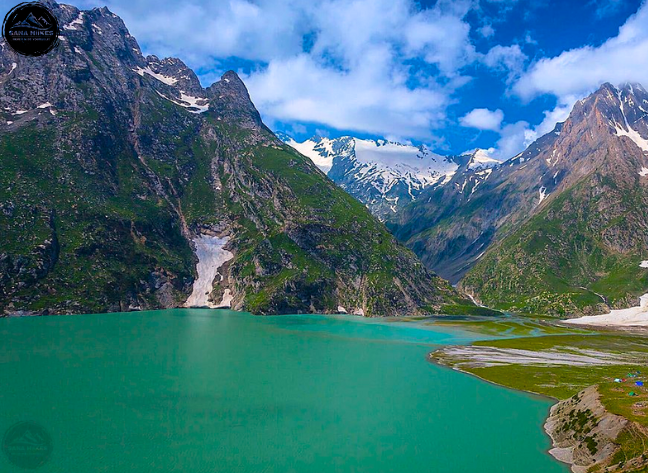
Summer (April to June)
Summer is the most popular time to visit Jammu & Kashmir, as the region enjoys pleasant weather with temperatures ranging from 15°C to 30°C. This is an ideal season for exploring the lush green valleys, houseboat stays in Srinagar, and sightseeing at the Mughal Gardens. Popular destinations such as Gulmarg, Pahalgam, and Sonamarg become lively with tourists seeking adventure activities like trekking, river rafting, and gondola rides. Pilgrims also prefer this season for visiting Vaishno Devi due to the comfortable travel conditions.
Monsoon (July to September)
The monsoon season in Jammu & Kashmir brings sporadic rainfall, mainly in the Jammu region, while Kashmir experiences light showers that enhance the beauty of the landscape. The valleys turn a lush green, offering a surreal experience. However, landslides in certain mountainous areas can make road travel unpredictable. This is the off-season for tourism, meaning fewer crowds and lower prices on hotels and travel packages, making it a great time for budget-conscious travelers.
Autumn (October to November)
Autumn in Kashmir is a mesmerizing spectacle, with the Chinar trees transforming into a brilliant canvas of red, gold, and orange. The weather remains cool, with temperatures between 10°C and 25°C, making it a great time for nature walks and photography. Srinagar’s gardens and parks look breathtaking in autumn hues, while attractions like Dachigam National Park offer excellent opportunities for spotting wildlife. The peaceful environment and fewer tourists make autumn an underrated but highly rewarding season to visit.
Winter (December to March)
Winter in Jammu & Kashmir is a paradise for snow lovers. Temperatures drop below freezing, and the landscape transforms into a winter wonderland. Gulmarg becomes a hub for skiing, snowboarding, and other winter sports, drawing adventure seekers from across the country. The famous Gulmarg Gondola ride offers stunning views of the snow-covered Pir Panjal range. While some high-altitude passes remain closed due to heavy snowfall, Srinagar and Jammu remain accessible by air and train. This season is perfect for honeymooners and those looking to experience the magic of snow-covered landscapes.
Each season in Jammu & Kashmir offers something unique, making it an evergreen destination that caters to travelers with different interests and preferences!
3. Things to Do & Must-Visit Places in Jammu and Kashmir
Jammu & Kashmir is a treasure trove of experiences, offering everything from adventure sports to spiritual retreats.
Adventure Activities
- Trekking & Hiking – Explore iconic trails like the Kashmir Great Lakes Trek, Tarsar Marsar Trek, and Amarnath Yatra Trek.
- Skiing & Snowboarding – Enjoy world-class winter sports in Gulmarg, which boasts some of the best ski slopes in Asia.
- River Rafting – Experience the thrill of rafting on the Lidder River in Pahalgam and the Indus River in Ladakh.
- Camping & Bonfires – Spend nights under the stars in picturesque valleys like Sonmarg and Yusmarg.
- Shikara Rides & Houseboat Stays – Relax on a traditional Shikara ride in Dal Lake and stay in a houseboat in Srinagar for a unique experience.

Cultural & Heritage Sites
- Mughal Gardens – Visit Nishat Bagh, Shalimar Bagh, and Chashme Shahi for their Persian-style beauty.
- Vaishno Devi Temple – A revered pilgrimage site attracting millions of devotees every year.
- Shankaracharya Temple – Offers panoramic views of Srinagar and is a spiritual retreat.
- Hazratbal Shrine & Jama Masjid – Important Islamic sites reflecting Kashmir’s rich heritage.
- Raghunath Temple – A famous Hindu temple complex in Jammu dedicated to Lord Rama.
Nature & Wildlife
- Gulmarg – Known for its lush meadows, skiing slopes, and the highest golf course in the world.
- Pahalgam – A stunning valley offering adventure, serenity, and breathtaking landscapes.
- Sonmarg – Famous for its glaciers, lush meadows, and adventure activities like trekking and horseback riding.
- Dachigam National Park – Home to the endangered Hangul deer and diverse flora and fauna.
- Betaab Valley – A postcard-perfect valley named after the Bollywood movie ‘Betaab.’
4. Local Cuisine and Where to Eat
Must-Try Dishes
- Rogan Josh – A signature Kashmiri dish, this slow-cooked mutton curry is rich in flavors of aromatic spices and saffron.
- Gushtaba – Minced mutton dumplings cooked in a creamy yogurt-based gravy, a delicacy in Kashmiri cuisine.
- Yakhni – A yogurt-based mutton curry infused with cardamom and fennel, perfect for food lovers.
- Dum Aloo – Baby potatoes cooked in a thick and spicy yogurt-based gravy, a popular vegetarian option.
- Kahwa – A traditional Kashmiri green tea infused with saffron, almonds, and cardamom, ideal for cold weather.
Best Places to Eat
- Ahdoos Restaurant (Srinagar) – Famous for authentic Kashmiri Wazwan cuisine.
- Mughal Darbar (Srinagar) – Best place to try Rogan Josh and traditional dishes.
- Krishna Vaishno Dhaba (Jammu) – Perfect for vegetarian travelers, known for its Rajma-Chawal.
- Shamyana Restaurant (Dal Lake, Srinagar) – A lakeside eatery offering local delicacies and stunning views.
- Pahalgham Hotel Restaurant (Pahalgam) – A great stop for traditional meals with a scenic view.
5. Travel Tips & Essentials
Traveling to Jammu & Kashmir requires some essential preparation to ensure a smooth and enjoyable experience. Here are some important tips:
Packing Essentials
- Clothing: Pack according to the season. Light woolens and breathable clothes for summer; heavy woolens, thermals, gloves, and snow boots for winter.
- Footwear: Comfortable trekking shoes for adventure activities and waterproof boots for winter travel.
- Accessories: Sunglasses, sunscreen, caps, and scarves for sun protection; rain gear for monsoons.
- Medical Kit: Basic medicines, altitude sickness tablets, motion sickness pills, and personal medications.
Travel Documents & Permits
- ID Proof: Carry government-issued identification (Aadhaar, Passport, or Driver’s License).
- Inner Line Permit (ILP): Required for Ladakh and certain restricted areas. Obtain it online or from local authorities.
- Special Permits: If traveling to border areas like Gurez Valley or Turtuk, check for necessary permissions.
Local Customs & Etiquette
- Respect the Culture: Kashmir has a rich cultural heritage; be respectful of local traditions.
- Dress Modestly: Especially in religious places and conservative areas.
- Photography Etiquette: Ask permission before clicking photos of locals or army personnel.
- Bargaining: Negotiation is common in local markets, but do it respectfully.
Safety & Security
- Stay Updated: Check weather conditions and local news for travel advisories.
- Avoid Restricted Areas: Some border regions may have restricted access due to security reasons.
- Emergency Numbers: Save local emergency contacts, including police (112) and medical services.
Responsible Travel & Eco-Tourism
- Leave No Trace: Avoid littering; carry reusable water bottles and eco-friendly products.
- Support Local Businesses: Choose local guides, handicrafts, and homestays to help the local economy.
- Respect Wildlife & Nature: Do not disturb animals, pick plants, or pollute water bodies.
These tips ensure a safe, comfortable, and memorable journey in the breathtaking landscapes of Jammu & Kashmir!
Final Thoughts
Jammu & Kashmir is truly a paradise on Earth, offering breathtaking landscapes, rich culture, and thrilling adventures. Whether you seek snow-covered peaks, serene lakes, spiritual journeys, or vibrant local markets, this destination has something for everyone. With its unmatched beauty and warm hospitality, a trip to J&K is an experience of a lifetime. Plan wisely, respect local customs, and embrace the magic of this Himalayan wonderland.

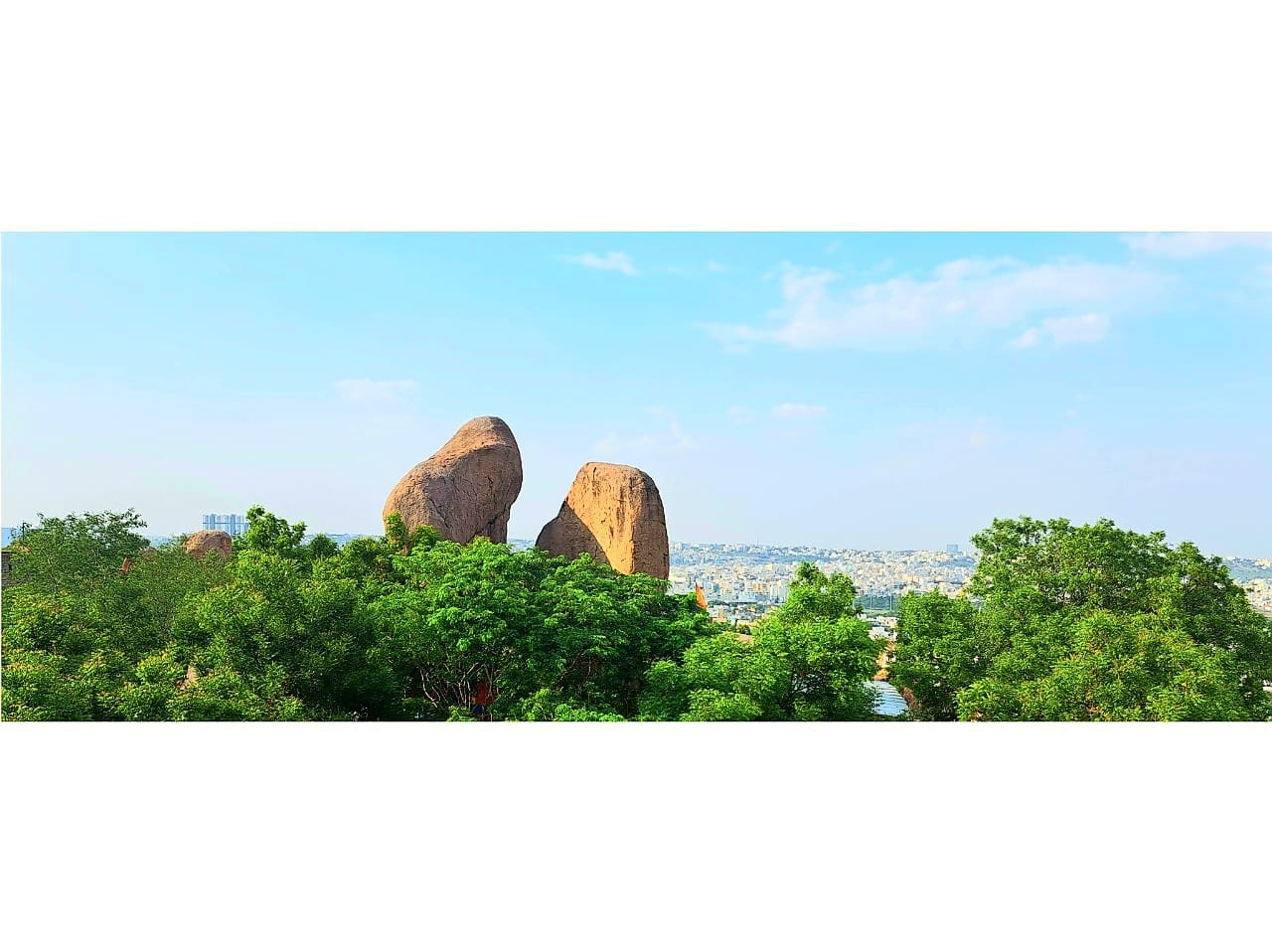
Leave a Reply